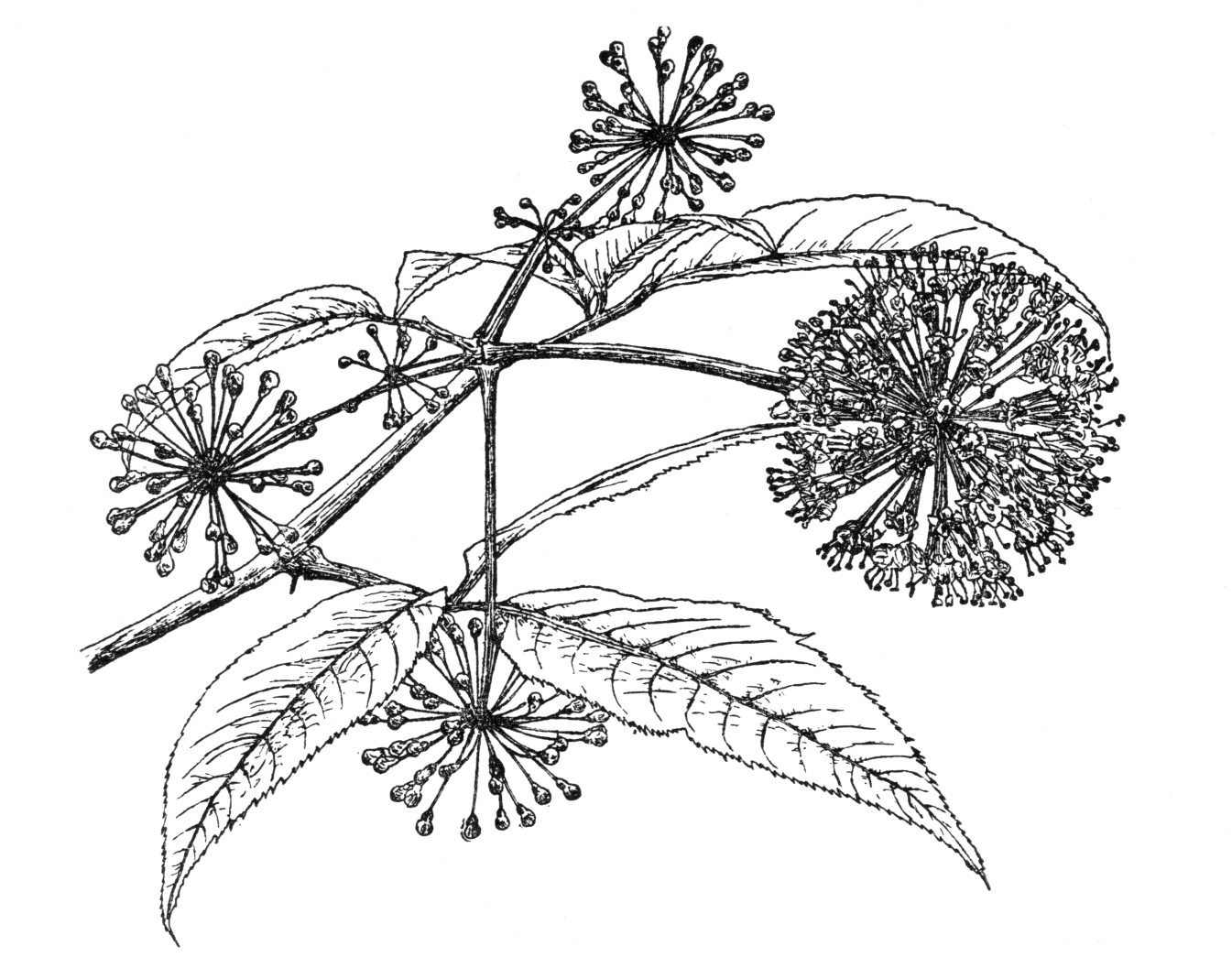Acanthopanax leucorrhizus
Credits
Article from Bean's Trees and Shrubs Hardy in the British Isles
Recommended citation
'Acanthopanax leucorrhizus' from the website Trees and Shrubs Online (treesandshrubsonline.
Genus
Synonyms
- Eleutherococcus leucorrhizus Oliver
Infraspecifics
A deciduous shrub, probably 6 to 10 ft high, entirely devoid of down, sometimes unarmed, sometimes with small, slender, downward-pointing prickles at the joints. Leaves composed of three or five leaflets borne on a stalk 1 to 3 in. long; leaflets 2 to 4 in. long, 5⁄8 to 11⁄4 in. wide, lanceolate, slender-pointed, doubly toothed, tapering at the base to a stalk 1⁄8 to 3⁄8 in. long. Flowers produced in July in a terminal cluster of umbels, each umbel 11⁄2 to 2 in. across, spherical, borne on a stalk 2 to 4 in. long. Each flower is small, greenish, on a slender stalk 1⁄2 to 3⁄4 in. long. Fruits black, roundish oval, 1⁄4 in. long, crowded in umbels over 2 in. across. Bot. Mag., t. 8607.
Native of Central China; discovered by A. Henry; introduced by Wilson in 1901. This is one of the handsomest species in this genus; its habit is not so stiff as that of its near allies, and the large umbels of black fruit are effective. It has been confused with A. simonii (q.v.), but differs in being glabrous and in the arrangement and shape of the prickles; from A. henryi it differs in the same respects as well as in the toothing of the leaflets. The Chinese obtain a drug from the root.
var. fulvescens Harms & Rehd
This has leaflets also downy beneath and rough above; but they are larger (up to 5 in. long by 2{1/4} in. wide), have no bristles on the leaf-stalks, the down beneath is yellowish, and, as in the type, the leaflets may be three to five to each leaf.

